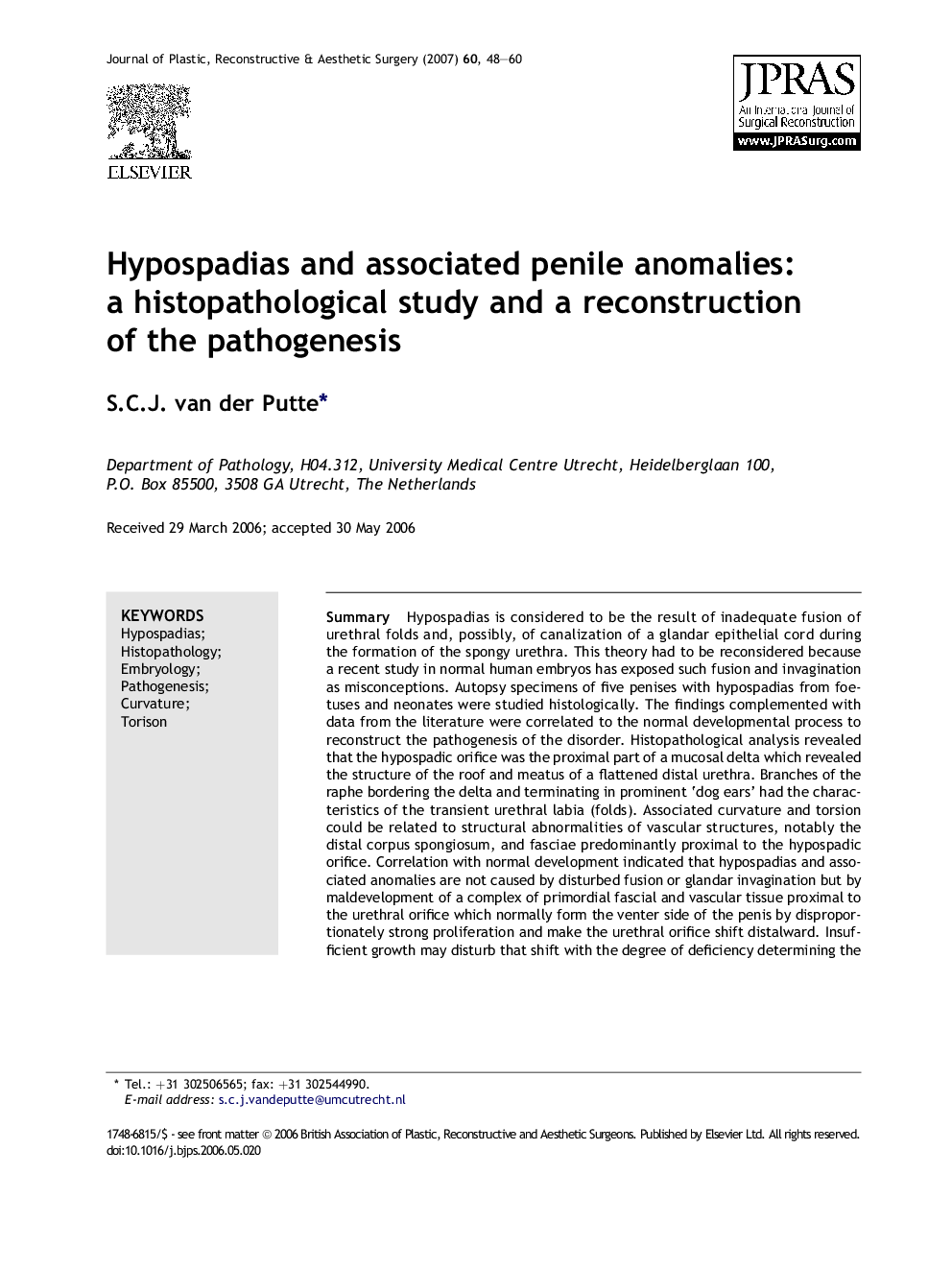| Article ID | Journal | Published Year | Pages | File Type |
|---|---|---|---|---|
| 4121089 | Journal of Plastic, Reconstructive & Aesthetic Surgery | 2007 | 13 Pages |
SummaryHypospadias is considered to be the result of inadequate fusion of urethral folds and, possibly, of canalization of a glandar epithelial cord during the formation of the spongy urethra. This theory had to be reconsidered because a recent study in normal human embryos has exposed such fusion and invagination as misconceptions. Autopsy specimens of five penises with hypospadias from foetuses and neonates were studied histologically. The findings complemented with data from the literature were correlated to the normal developmental process to reconstruct the pathogenesis of the disorder. Histopathological analysis revealed that the hypospadic orifice was the proximal part of a mucosal delta which revealed the structure of the roof and meatus of a flattened distal urethra. Branches of the raphe bordering the delta and terminating in prominent ‘dog ears’ had the characteristics of the transient urethral labia (folds). Associated curvature and torsion could be related to structural abnormalities of vascular structures, notably the distal corpus spongiosum, and fasciae predominantly proximal to the hypospadic orifice. Correlation with normal development indicated that hypospadias and associated anomalies are not caused by disturbed fusion or glandar invagination but by maldevelopment of a complex of primordial fascial and vascular tissue proximal to the urethral orifice which normally form the venter side of the penis by disproportionately strong proliferation and make the urethral orifice shift distalward. Insufficient growth may disturb that shift with the degree of deficiency determining the precise position of the urethral orifice, size of the urethral delta and defect of the prepuce. Shortage and/or poor organisation of these tissues explain curvature and, if asymmetrical, torsion, both of which can occur also with minimal urethral deformity or as congenital ventral curvature and torsion without hypospadias.
